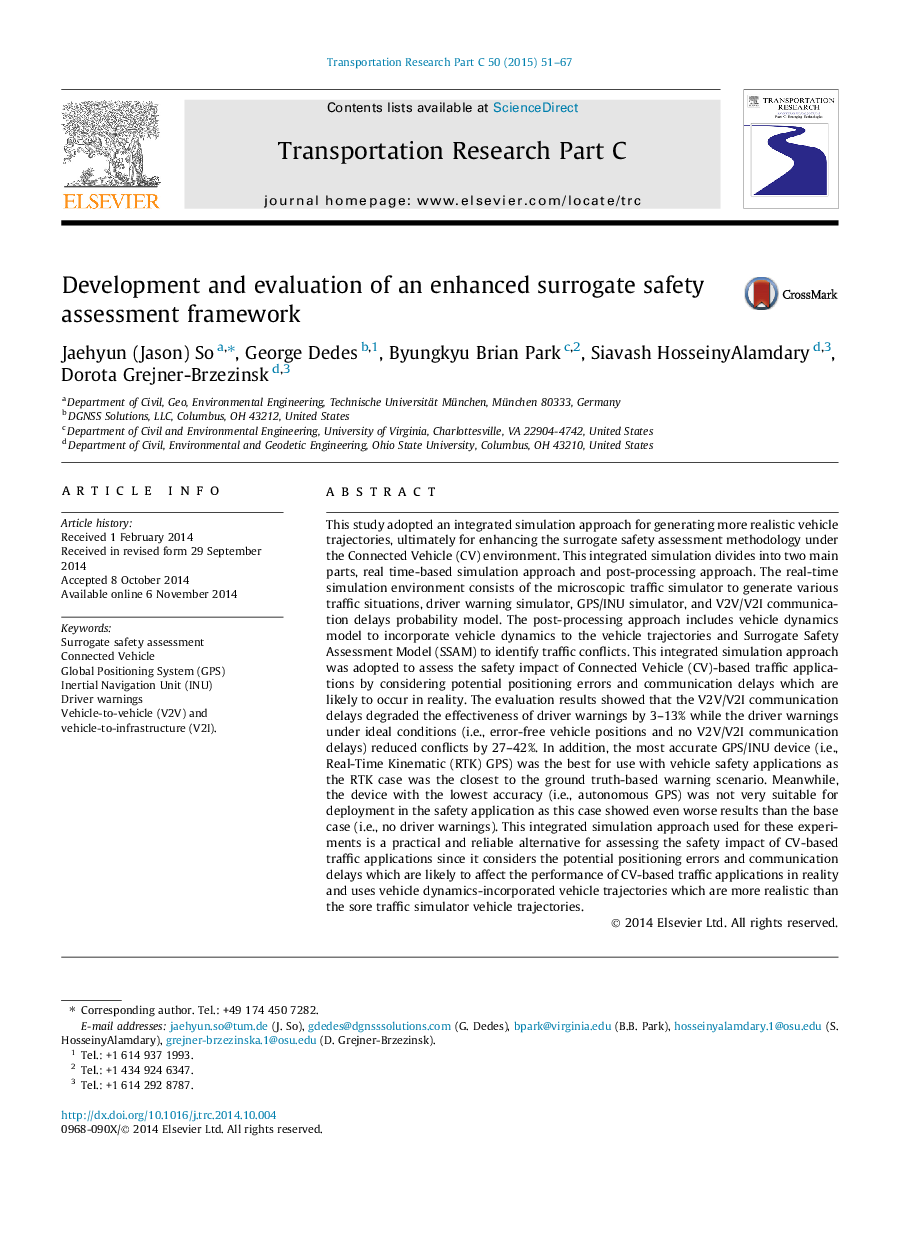| Article ID | Journal | Published Year | Pages | File Type |
|---|---|---|---|---|
| 525029 | Transportation Research Part C: Emerging Technologies | 2015 | 17 Pages |
•Driver warnings and the evasive maneuver were implemented with the communications delay and the GPS/INU errors.•A V2V/V2I communication simulator and a GPS/INU simulator were developed to consider the safety impact of these technologies.•Vehicle trajectories produced from the new-integrated safety simulator was post-processed by the vehicle dynamics model (i.e., CarSim).•Traffic simulator, driver warning, GPS/INU, V2V/V2I, vehicle dynamics, and SSAM were integrated as the surrogate safety simulation test-bed.
This study adopted an integrated simulation approach for generating more realistic vehicle trajectories, ultimately for enhancing the surrogate safety assessment methodology under the Connected Vehicle (CV) environment. This integrated simulation divides into two main parts, real time-based simulation approach and post-processing approach. The real-time simulation environment consists of the microscopic traffic simulator to generate various traffic situations, driver warning simulator, GPS/INU simulator, and V2V/V2I communication delays probability model. The post-processing approach includes vehicle dynamics model to incorporate vehicle dynamics to the vehicle trajectories and Surrogate Safety Assessment Model (SSAM) to identify traffic conflicts. This integrated simulation approach was adopted to assess the safety impact of Connected Vehicle (CV)-based traffic applications by considering potential positioning errors and communication delays which are likely to occur in reality. The evaluation results showed that the V2V/V2I communication delays degraded the effectiveness of driver warnings by 3–13% while the driver warnings under ideal conditions (i.e., error-free vehicle positions and no V2V/V2I communication delays) reduced conflicts by 27–42%. In addition, the most accurate GPS/INU device (i.e., Real-Time Kinematic (RTK) GPS) was the best for use with vehicle safety applications as the RTK case was the closest to the ground truth-based warning scenario. Meanwhile, the device with the lowest accuracy (i.e., autonomous GPS) was not very suitable for deployment in the safety application as this case showed even worse results than the base case (i.e., no driver warnings). This integrated simulation approach used for these experiments is a practical and reliable alternative for assessing the safety impact of CV-based traffic applications since it considers the potential positioning errors and communication delays which are likely to affect the performance of CV-based traffic applications in reality and uses vehicle dynamics-incorporated vehicle trajectories which are more realistic than the sore traffic simulator vehicle trajectories.
